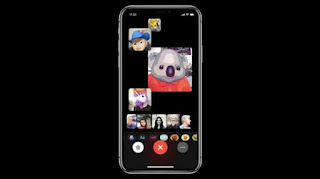It’s official now. Qualcomm‘s all-new Snapdragon 820 has been introduced by the company refuting recent reports suggesting that the upcoming S820 chipset (SoC) does not have any thermal or overheating issues. It was annunced at this year’s MWC, and at that time Qualcomm clarified that it will be using a custom 64-bit CPU architecture in their own ARMv8-based Kryo chip and also confirmed that it will be purely based on FinFET process node. Later on, Qualcomm has also revealed details of Adreno 530 GPU for Snapdragon 820, which is said will offer 40% graphics, compute capabilities, and power usage compared to 430 mobile GPU. Snapdragon 820 processor with X12 LTE and 8996 Mobile CPU, and Smart protect with Real-time, on-device anti-malware technology for the S820 were also confirmed, recently. Today, Qualcomm at an event in New York City has detailed all, but not least about the Snapdragon 820, and its graphics, and availability.
How Qualcomm’s Snapdragon 820 will improve next year’s upcoming hardware and gadgets. Given that it will deliver LTE speeds of up to 600 Mbps and support 802.11ad WiFi; it’s significantly more power-efficient; and it’ll use machine learning to fight malware right on your device. Qualcomm did shown off the 820’s new features, which could be applied to devices coming in 2016.
Other specs on Snapdragon 820 is made of he new 64-bit Kryo CPU, a 14nm quad-core chip; the aforementioned Adreno 530 GPU, which supports OpenGL ES 3.1+ and OpenCL 2.0 Full; the Hexagon 680 DSP, which includes a “Low Power Island” dedicated to sensor processing; the new X12 LTE modem; and several other refreshed components. It’s up to device manufacturer to decide whether to take advantage of the inclusions offered by the Snapdragon 820, but it’s worth knowing what the chip is capable of.
This is Qualcomm’s new flagship chip which is significantly faster and powerful than older ones, and beyond that, the company claims Snapdragon 820’s twice as efficient as the 810. Adds solid upgrade on the graphics front. Qualcomm had several elaborate 3D environment running on Snapdragon 820 reference tablets and they’re far more impressive than the games we are running on the 810 last year. On top, to support faster speeds, a few tricks up its sleeve to improve your LTE experience. Snapdragon 820 supports LTE-U standard, for instance, allows carriers to use unlicensed WiFi spectrum to make their networks more robust. WiFi calling capabilities has also been improved, with the ability to hop between WiFi and LTE more intelligently, depending on the speed of your WiFi network.
Remind you that the new Snapdragon 820 also integrated with new “Trusignal” antenna boost technology, which optimizes your reception based on things that may be blocking it, for that incriment, you can find it on LG V10 – available right now.
About Qualcomm’s Sense ID. It’s an ultrasonic fingerprint authentication tech, unveiled by the chip maker this year. Sense ID won’t be far affected by debris or sweat on your finger, unlike capacitive fingerprint reading, which we’re seeing on smartphones currently. The ultrasonic sensors can also be embedded in metal, glass and other surfaces, which nevertheless be placed just about anywhere on your phone, even right on the side. Sense ID appeared to work just as how Apple’s latest Touch ID does, but a bit of dirt on a Qualcomm reps fingers didn’t slow it down at all.
WiFi 802.11ac, Qualcomm is already working on bringing to Snapdragon 820 into action with the next standard of it. With the speeds of around 5-6Gbps in close range and tri-band connectivity in the 60GHz spectrum, the new S820 will draw the new standard of potential speeds. Qualcomm’s demo shows the newer standard performing significantly faster than 802.11ac with multi-core MIMO technology. So the 802.11ac can theoretically hit around 6 Gbps, for those looking to stream things like 4K video, this standard will worth more.
Qualcomm showed off a 4K video streaming wirelessly from a phone to a TV via an 802.11ad dock, which flawlessly looked pretty fine. Qualcomm says 802.11ad routers should start appearing next year.
In brief:
- Up to 2.2 GHz quad-core custom 64-bit Qualcomm Kryo CPUs
- Integrated X12 LTE, with Global Mode, 3x faster peak upload speeds and 33% faster peak download speeds compared to X10 LTE
- Cat 12/13 speeds of up to 600 Mbps down/150 Mbps up via 3x20MHz downlink, 2X20MHz uplink
- LTE/Wi-FI link aggregation, LTE-U, LTE Broadcast, LTE Dual SIM, Dual Active (DSDA), HD Voice over 3G and VoLTE,Wi-Fi calling with LTE call continuity
- Qualcomm Adreno 530 GPU, Up to OpenGL ES 3.1+
- Supports up to 4K Ultra HD on-device, 4K Ultra HD output, 1080p and 4K external display support
- 4K HEVC video at 60FPS with 10-bit color
- WCD9335 audio codec, Hi-Fi 24bit/192kHz FLAC playback
- Up to 28 MP, Qualcomm Spectra Image Sensor Processor (14-bit dual-ISP)
- Qualcomm Hexagon 680 DSP with Hexagon Vector eXtensions and Low Power Island for sensor processing
- UFS 2.0, eMMC 5.1, SD 3.0 (UHS-I), LPDDR4 1866MHz dual-channel memory
- QCA9500 802.11ad 60GHz WiFi 1st WTR3950 LTE-U support, 2×2 MU-MIMO, Tri-band Wi-Fi, Qualcomm IZat Gen8C, USB 3.0/2.0, NFC
- Qualcomm Quick Charge 3.0
Finally, the Qualcomm Snapdragon 820-based hardware devices and tablets will be making their debut next year, sometime in the first half of 2016.
What Qualcomm says about the design of the new Snapdragon 820 SoC:
The Snapdragon 820 system-on-chip (SoC) represents a rare event in the engineering and design of semiconductors. Every major IP block in the system is a newly optimized custom design. The opportunity to take a fresh look at a processor to this magnitude is infrequent, as each IP block typically has its own update schedule.But in the case of the Snapdragon 820, every major component of the system has been significantly improved in terms of performance and power consumption to help deliver the kinds of always-on, performance-demanding experiences that users want.

No comments:
Post a Comment